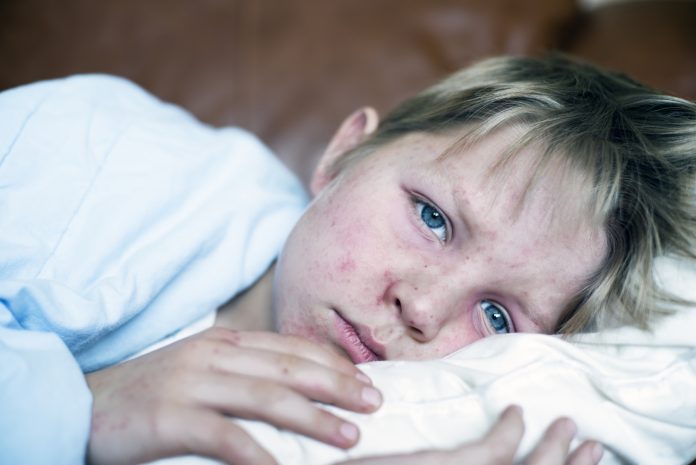
A coin-sized biosensing device can detect the measles virus in saliva, opening up its detection in emergency departments and wherever quick and timely diagnosis of infection is needed.
The point-of-care device is smaller than a €1-cent coin or a U.S. quarter and requires minimal sample pre-processing, enabling it to be used where conventional tests cannot be easily performed such as airports, train or bus stations, and war zones.
The findings present a new way to detect one of the most infectious airborne diseases, which is responsible for 140,000 deaths worldwide each year and has a basic reproduction rate similar to that of the SARS-CoV-2 Omicron variant.
The lab-on-a-chip device exploits the ability of certain materials to produce an electric charge in response to applied mechanical stress. Surface traveling or standing waves are generated, with surface-acoustic-waves (SAWs) used for both sensing and fluid recirculation.
Reporting the findings in Advanced Functional Materials, the researchers say that their findings may serve as guidelines for designing new microfluidic-based biosensing systems.
“Our technology for the first time demonstrated the synergic operation of different [SAW] -based micro devices on the same chip, in the context of lab-on-a-chip biosensing,” explained senior author Marco Cecchini, senior researcher of the Nanoscience Institute at the National Research Council of Italy, and chief technology officer of its first deep-tech spinoff Intelligent Acoustics Systems.
“In this way we have been able to drastically improve the detection limit of our sensors, potentially enabling early point-of-care diagnostic applications.”
Current measles detection is usually performed in hospital laboratories or emergency departments by highly trained personnel.
It most commonly involves identifying specific immunoglobulin-M in serum, often using enzyme-linked immunosorbent assays, or by detecting the measles ribonucleic acid genome in a respiratory sample like saliva by reverse-transcriptase polymerase chain reaction.
The SAW biosensor works instead by detecting changes in surface mass density, the researchers explain.
When a molecule binds on the surface of the SAW resonator, it increases the surface mass density and decreases the SAW propagation speed.
This binding results in a red shift of the resonance frequency proportional to the SAW speed, which is then quantitatively correlated with the amount of adhered mass.
The study results highlighted the importance of liquid recirculating and mixing during the sample incubation to optimize biosensing performance and the synergic combination of SAW-mixing and SAW-sensing.
The lower concentration limit for detecting measles virions, which are the complete, infective form of the virus outside the host cell, was 209 U/ml with SAW mixing versus 741 U/ml without SAW mixing.
A validation study revealed that the SAW lab-on-a-chip signal was an average of -229 kHz for saliva loaded with a concentration of 2400 U\ml of measles virions compared with -28 kHz for a negative control, a statistically significant difference.
“The presented highlights have demonstrated the high potential of the effect provided by liquid mixing during sample incubation in overcoming restraints related to the surface heterogenicity,” the researchers note.
They point out: “Prompted by the current COVID-19 pandemic, saliva is becoming of particular interest as diagnostic material because of its low cost, non-invasive and safe collection, particularly in children who are a major target of measles disease.”













